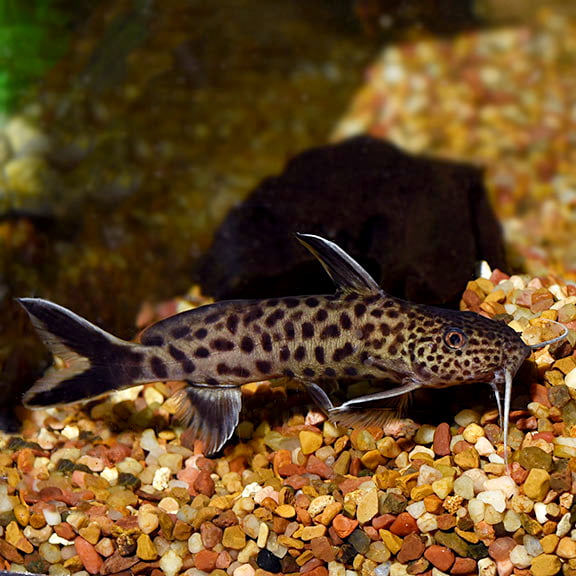
Synodontis Petricola
Synodontis petricola is a small freshwater catfish species belonging to the family Mochokidae. This species is native to the rocky areas of Lake Tanganyika in East Africa, specifically in the Democratic Republic of Congo, Zambia, and Tanzania. Synodontis petricola is commonly kept in aquariums due to its distinctive appearance and interesting behavior.
Here are some key characteristics and information about Synodontis petricola:
Appearance: Synodontis petricola has a sleek and slender body with a unique pattern of dark spots and lines on a light background. The spots and lines form an intricate maze-like pattern, providing effective camouflage in its natural rocky habitat.
Size: Adult petricolas typically reach a size of around 3 to 4 inches (7.5 to 10 cm) in length.
Habitat: In the wild, these catfish inhabit the rocky shorelines and areas with crevices in Lake Tanganyika. They prefer areas with plenty of hiding spots.
Behavior: Synodontis petricola is a nocturnal species, meaning it is more active during the night. They are generally peaceful, but like many catfish, they can be territorial and might establish their own hiding spots in the aquarium.
Tank Requirements: To replicate their natural habitat, it is recommended to set up an aquarium with plenty of rocks, caves, and hiding places. The water should be well-oxygenated, and the tank should have a sandy substrate. The temperature should be kept within the range of 75 to 82°F (24 to 28°C).
Diet: Synodontis petricola is omnivorous. In the aquarium, they can be fed a varied diet that includes high-quality sinking pellets, frozen or live foods such as bloodworms and brine shrimp.
Compatibility: They are generally peaceful but may exhibit territorial behavior, especially if not provided with enough hiding spaces. They can coexist with other peaceful fish that are not overly aggressive.
Remember that it's essential to research and understand the specific needs of any fish species you plan to keep in an aquarium to ensure their well-being. Always provide a suitable environment, proper nutrition, and compatible tankmates for Synodontis petricola.



